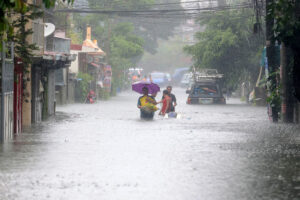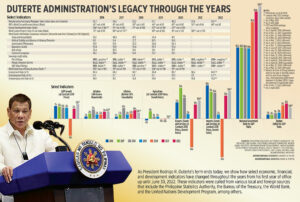When disaster strikes

In 2022, the Philippines was ranked the most disaster-prone country in the world. The World Risk Index (WRI) 2022 report gave the country an index score of 46.86, the highest among the top 10 most disaster-prone countries because of high risk, exposure, and vulnerability.
Trailing the Philippines were India and Indonesia, which both had an index score of 42.31. The other countries in the Top 10 list were Colombia (38.37), Mexico (37.55), Myanmar (35.49), Mozambique (34.37), China (28.70), Bangladesh (27.90), and Pakistan (26.75).
The WRI indicates the disaster risk from extreme natural events and negative climate change impacts for 193 countries in the world. It is calculated per country as the geometric mean of exposure and vulnerability. Exposure represents the extent to which populations are exposed to and burdened by the impacts of earthquakes, tsunamis, coastal and riverine floodings, cyclones, droughts, and sea level rise. Vulnerability maps the societal domain and is composed of susceptibility, coping, and adaptation.
An average of 20 typhoons enter the Philippines annually, with the most intense coming between July and October, each with the potential to cause floods and landslides. Another factor that increases the country’s vulnerability and risk is its location in the “ring of fire” and typhoon belt in the Pacific Ocean, where many earthquakes and volcanic eruptions occur, according to PreventionWeb, the global knowledge sharing platform for disaster risk reduction and resilience.
The Awake! magazine with the cover “When Disaster Strikes: Steps That Can Save Lives,” also emphasizes that no one is immune to disaster. Preparation is the most important key to survival. It said that the first thing to do is to prepare mentally wherein one recognizes the fact that disasters happen and that everyone is potentially at risk.
UNICEF also recommends that every household prepare an emergency plan that includes specific steps.
First is to identify safe routes from your home to the nearest evacuation site. Second, make a list of emergency hotlines and contact details of relatives and friends that you may call in case of emergency; give each family member a copy. Third, explain the possible emergency scenarios in your area to your children. Give each family member a specific responsibility and agree on when your emergency plan should be periodically reviewed. Fourth, practice and memorize the family protocols for a fire, typhoon, flood, earthquake, volcanic eruption, landslide, tsunami, and storm surge. And finally, agree on a meeting place in the event that your family gets separated during an emergency.
The Department of Health (DoH) urges every household to prepare “go bags” containing first aid kit, food, bottled water, medicines, clothes, survival kit, IDs, and other important documents. The go bag should enable a person to survive for at least three days before rescuers arrive.
The first aid kit includes medicated strips, sterile gauze, micropore tape, povidone-iodine, rubbing alcohol, ointment for wound care, mefenamic acid, paracetamol, and maintenance medications. The survival kit consists of flashlight or penlight, matches or lighter (placed in zip lock bag), rope or string, fishhook and line, and whistle among others.
Concerning food, it is recommended to pack long shelf-life food items such as canned goods, cup noodles, biscuits, crackers, cookies, and cereals. The go bag should include a 1.5-liter bottle of drinking water, instant coffee, tea, plates and utensils, and plastic bags. Essential toiletries include toothbrush, toothpaste, mouthwash; sanitary napkins; bath soap, shampoo, conditioner; hand sanitizer and rubbing alcohol; insect repellant; and sunblock.
The go bag should also include safety goggles, dust mask, N95 mask, surgical gloves, raincoat, poncho, small transistor radio, batteries, power bank, charger, extension cord, lightweight shoes and slippers, jacket/cold weather clothes, blankets, sleeping bag, and change of clothes for three days. Also, bring cash, ATM card or passbook, government-issued IDs such as passports as well as emergency contact information, birth and marriage certificates, property and insurance documents, and medical records.
Being an expert in emergency management, Lt. Commander Ferdinand “Dino” Juan, Philippine Navy, (GSC) (Reserve), said that it would help to have an extra go bag in the workplace and in one’s vehicle.
During a disaster, meanwhile, the Awake! issue added that it is important to act quickly. For instance, if there is a fire, one must stay close to the floor, and move quickly to the nearest exit. Smoke makes it hard to see, and most fire deaths are caused by smoke inhalation.
In a flood, stay out of flooded buildings. One must avoid wading in or driving through water, as floodwater may contain sewage and conceal dangers, including debris, open manholes, and downed power lines. It must also be remembered that even two feet of moving water can carry a car away. Most deaths in a flood result when people try to drive through moving water.
Finally, if the authorities order an evacuation, leave immediately!
Teodoro B. Padilla is the executive director of Pharmaceutical and Healthcare Association of the Philippines (PHAP). PHAP represents the biopharmaceutical medicines and vaccines industry in the country. Its members are in the forefront of research and development efforts for COVID-19 and other diseases that affect Filipinos.




